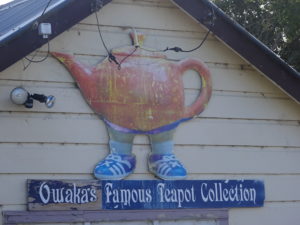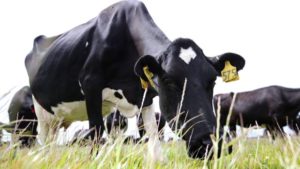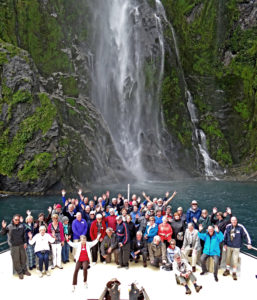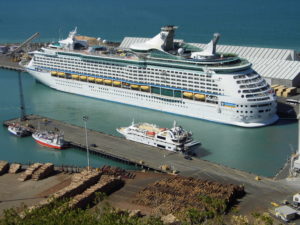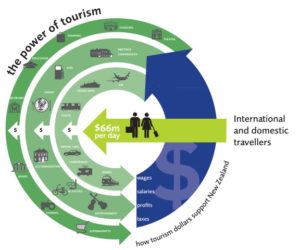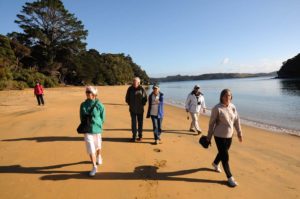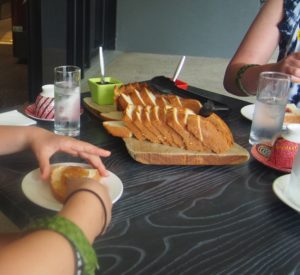Posts Tagged ‘tourism initiatives’
NZx: November 26th Sustainable tourism
Naumai
It was heartening, if with a strong sense of deja vu, to see the tourism industry (re) start a process to ensure economic, environmental, host community, and visitor satisfaction and engagement, drive the future of sustainable tourism in New Zealand.
We have of course been here before with initiatives such as Green Globe and Environmental Plans. These initiatives, while driven locally, had a global context and more importantly measured success towards publicly stated goals. Poor decision making and lack of integration resulted in a lost opportunity for the industry and the weakly positioned environmental initiative in the form of the original Qualmark.
You can read more about this current sustainable tourism initiative here: http://sustainabletourism.nz/assets/Uploads/FINAL-TIA-SUSTAINABILITY-BOOK-17.0-web-spreads.pdf
 In a sense there’s nothing really new here. The approach is the industry’s response to rapid growth, increasing public concerns about international visitor numbers, effects of tourism on local communities and the environment and ensuring tourism businesses are economically successful. All sensible and admirable goals – if not a little overdue.
In a sense there’s nothing really new here. The approach is the industry’s response to rapid growth, increasing public concerns about international visitor numbers, effects of tourism on local communities and the environment and ensuring tourism businesses are economically successful. All sensible and admirable goals – if not a little overdue.
Over the years such initiatives have been met with initial support, particularly amongst the larger tourism entities – check out the current list of supporters here. Many other entities will undoubtedly sign up, driven by a mixture of opportunity, marketing push/pull, desire to stay ahead of the pack and some through genuine commitment.
As Fonterra has found their nearly tw0 year old public relations campaign has meet with mixed reaction. Some see through it as typical pr speak , while others believe it has a role to play in ensuring the dairy industries future in an increasingly skeptical New Zealand.
While not suggesting the campaign is no more than tourism’s version of pr speak it will take more than this initiative to make a difference. More needs to be done with both Central Government and Local Government to ensure all parties commitments are in alignment.
Of course it is local communities that drive a lot of input into both forms of Government. We have previously commented on tourism social license to operate in previous blogs.
The 14 commitments are big on the right words but light on measuring and reporting on success, other than financial.
Hopefully this tourism initiative will be both sustainable, wide reaching and effective!
Ka kite ano
NZx – May 30th: alternative facts
Naumai
The recent public debate (which is full of alternative facts) about Auckland’s proposed bed tax highlights the gaps between local and central government funding, and the lack of understanding as to how tourism adds benefits and costs to all aspects of the New Zealand economy.
Many people have a view on the tax but only a few reflect the facts. Tourism Industry Aotearoa, Chief Executive Chris Roberts says the commercial accommodation sector receives just 9% of the total visitor spend in Auckland source (Ministry of Business Innovation and Employment).
“The original targeted rate proposal was for 330 commercial property owners to pay the full cost of Council tourism and event promotion. The cost of that promotion is currently shared by every ratepayer in Auckland, residential and commercial.
“It is still not the fair share that Mayor Goff repeatedly talks about. The small targeted group receives around 7-8% of the total visitor spend in Auckland, and yet is being asked to pay 50% of promotion and event support.”
We note that in 2014 international and domestic visitors spent $ 66 million per day in New Zealand communities. Thats a fact.
Shamubeel Eaqub also believes the plan offers no clear alignment between costs and benefit. You can read his original article here http://www.stuff.co.nz/business/opinion-analysis/93272191/shamubeel-eaqub-bed-tax-reveals-local-government-flaws
With 2017 being an election year , one assumes there will soon be a large amount of alternative facts in circulation. Tourism will need to make sure it’s voice is united, clear and more importantly heard.
NZx March 25th: the pace of change
Naumai
There is no doubt that the pace of change in New Zealand tourism is continuing to grow: everywhere you look there are more visitors out there experiencing what NZ has to offer. A recent trip to the West Coast confirmed that. Even a site like Oparara http://www.karameainfo.co.nz/oparara-basin/ was very busy.
Some of the tourism issues have or are being well debated. Issues such as freshwater, overcrowding at key sites, climate change and visitor levy’s are all part of the current “conversation”.
On a broader level, but very closely aligned with increasing tourism, a number of issues were highlighted last year by Jan Wright, Commissioner for the Environment. Wright raised four key issues: climate change, slow progress in marine protection, lack of trees on unstable hill country, and concerns over the future of our wildlife.
She made the interesting point that environmental issues, rather than separate domains (air, land, marine, climate and fresh water), should form the basis of the shared story. This more holistic approach makes common sense.
Wright’s comments reflect the split in the key debates, and lack of an holistic approach, being canvassed over NZ tourism, the environment and business.
Mayor Goff’s accommodation tax being one such initiative.
A wider, holstic example is the recent study identifying Rakiura’s Port Pegasus for a potential new salmon farming enterprise http://www.stuff.co.nz/southland-times/news/90883538/Stewart-Island-chosen-for-possible-new-aquaculture-project . This central-government funded programme involves Ngai Tahu, the Department of Conservation, the Ministry for the Environment, the Ministry of Primary Industries and the Ministry of Business, Innovation and Employment. Sorry – where is tourism in that mix? Its unbelievable that tourism opportunities are currently heavily restricted in Pegasus yet an industry with doubtful environmental credentials is being supported.
NZ tourism is entering a sensitive phase, particularly in regard to the potential effects on local communities of such growth and the shutting out of potential added value tourism opportunities.
Ka kite ano
Malcolm
NZx September 19th: Authentic
Naumai
One of the challenges for attractions is to keep the visitor experience fresh and alive. Regular change and emotional connection is a necessity of designing successful visitor experiences.
While Tilden’s https://prezi.com/s1qrbgvpu7ik/tildens-principles-of-interpretation/ principles of interpretation were written in the late 1950’s they still apply today.
Without provocation the visitor experience risks being compromised and becoming purely a source of information – after all interpretation (the art of sharing stories and experiences) is not information!
Visiting the indigenous Tjapukai Cultural Centre in Cairns recently was case in point. There has been some attempt to use Tildens principles, particularly in the areas of reveal and age related experiences. Unfortunately the low point came when we were served “authentic” bush tucker – at a table complete with porcelain plates and in cups made in China. The damper was more like commercial bread. This was probably an attempt to placate potential food safety concerns, but it may also be an attempt to cater to the large wholesale group demands.
Whichever it was definitely not an authentic experience, and did little to provocate our thinking on indigenous foods!
Visiting Tjapukai ten years ago was a highlight of the Queensland experience. We were emotionally moved but this time the sanitized experience left us cold.
Ka kite ano
NZx 27th October:Integrated
Naumai.
One of the advantages of living in a relatively small country is the opportunity to integrate our delivery of visitor experiences and opportunities.
This opportunity was seized upon by various tourism initiatives over the years, including the development of Green Globe 21, Qualmark and the gradual upgrading of i-site services.
While some of these various integrated initiatives are now in place, the same cannot be said of the development of visitor experiences throughout the country.
Travelling around with a group of savvy international visitors, one soon (re) discovers that many of our visitor experiences are essentially copies of other experiences, in other parts of the country. Just how many bungy jumps, jet boat rides, marae visits, small ship cruising and conservation experiences do we need?
All the research suggests that integrated, themed experiences are what visitors seek, remember and recommend.
What we seem to have lost is the ability to develop or re-develop new visitor experiences that are different to anything else on offer. Good attractions do just this, re-developing their core business every 2/3 years. They know the importance of attracting new and repeat business, and standing out from the crowd.
All too often small businesses pour scarce resources into marketing instead of the product development phase. If they don’t get the theme, the visitor experience and the “offer” right early on they typically struggle to survive.
Many of our smaller visitor experiences then struggle financially, partly because they can’t make an impact in a crowded marketplace. A trend emerging is the conglomeration of many of the smaller entities into one overall business unit, while perhaps retaining the smaller brands for a “point of difference”.
Perhaps visitor experience operators should look integrating their key themes and visitor “offer”. The key focus should be on developing a visitor experience “offer” that no one else can.
Ka kite ano
Malcolm
